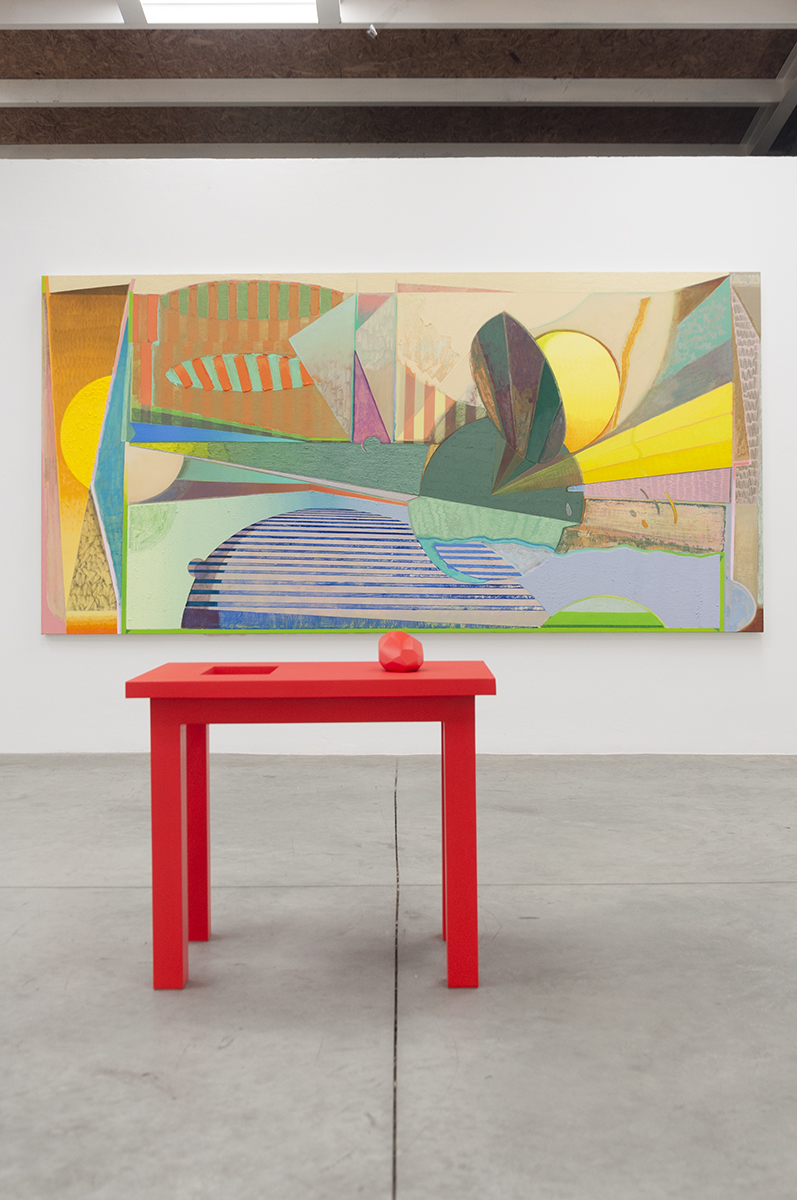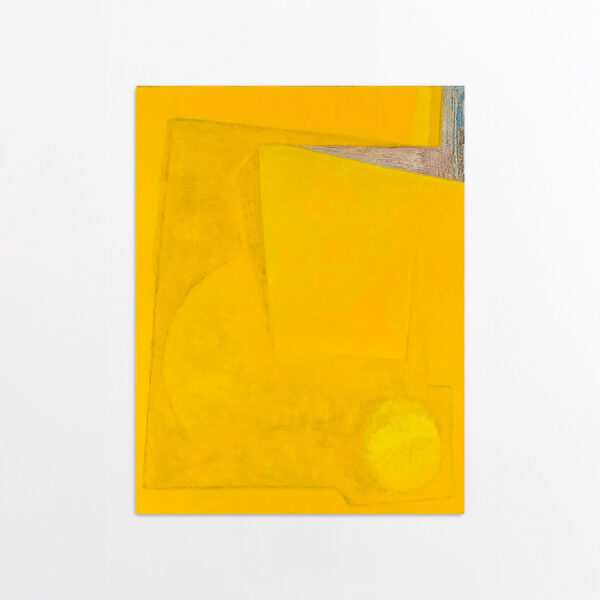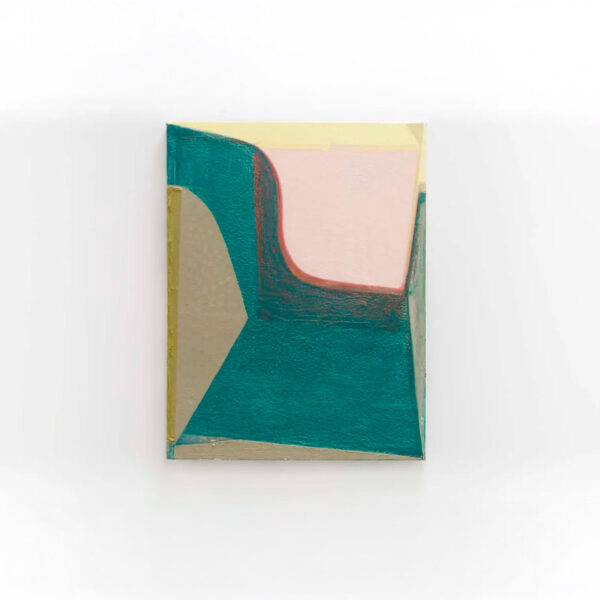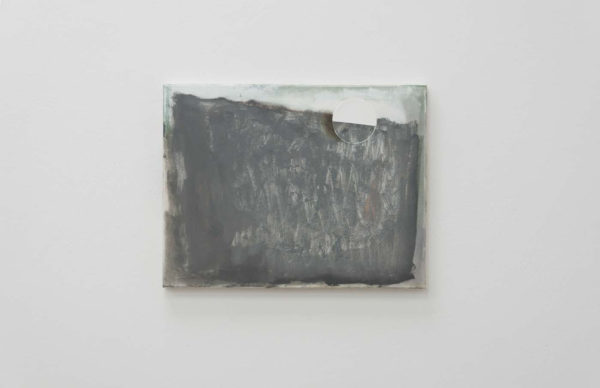




Mercurio Frente al Sol
Instituto de Visión presents for the first time the exhibition Mercurio frente al sol, a diverse body of work by artists Alberto Lezaca and Sebastián Fierro. The works are configured from the displacement of a material support such as the photographic record or the creation of spatial models on cardboard towards other supports, such as painting, digital synthesis image and sculpture. The artistic practice of Alberto Lezaca and Sebastián Fierro explores the mental construction of reality from the observation and experimentation of physical space in their own artistic practices.
“Then, my friend, following the example of the Phoenicians,
did you adjust your journey according to the stars?
No -said Menipo- I travel in those stars “1
Mercury passing before the sun is the name that the artist Giacomo Balla gave to a painting he made in 1914, when he was part of the Italian Futurist movement. The name of the painting alludes to an astronomical phenomenon called Mercury’s planetary transit, in which the planet passes in front of the sun and can be observed from the earth, thanks to the particular alignment of three stars. Giacomo Balla knew that only during a planetary transit, the actual size of a planet can be perceived by the simultaneous view of this planet and the sun, but this is not what caught his attention. After preparing the sighting for the transit of Mercury, he made sketches of drawings and different paintings from the memory of the image he had seen through the telescope and form the diagrams he had drawn of this celestial phenomenon.
Instituto de Vision presents in the exhibition Mercury passing before the sun, a diverse body of work form the artists Alberto Lezaca and Sebastian Fierro, in which the works are constructed from the displacement of a material support, photography or cardboard spatial models, to other media such as painting, digital image synthesis or sculpture. Sebastian Fierro and Alberto Lezaca’s artistic practices explore the mental construction of reality, from the observation and experimentation with physical space in their own artistic practices.
In the project Image-as-Image Alberto Lezaca draws on a series of documentary images that appeared in the twentieth century press. The photograph of Ad Reinhardt in his study, surrounded by his black paintings, taken by photographer John Loengard, for an article in Life Magazine in 1966; a 1927 photograph of the door built by Marcel Duchamp in a corner of his apartment in Paris, which had the function of opening and closing at the same time two different rooms; the photograph of Kazimir Malevich’s wake room in 1935, where the black monochrome was hung over his deathbed, along with other of his paintings arranged around the room; a photograph of Giccomo Balla in his studio in 1948, holding the painting called Fallimento (Bankruptcy), in which he had painted in 1902, years before joining the futurist movement, the closed door of a abandoned bankrupted business; and among other documentary photographs an image of Mark Rothko in his workshop in 1964, preparing a paint for the Houston Chapel, the huge warehouse where he worked was an old carriage garage transformed into a Japanese tearoom of four spaces surrounded by a traditional Japanese garden.
Those documentary photographs, which originally appeared in newspapers and magazines, are reconstructed in a 3D modeling program by Alberto Lezaca. Despite creating an image from computer graphing processes, which could result in a hyper-real image which replicates the physical materiality of space and objects; they are actually images created as sorts of prototype scenes, a simulation of the photographic medium, of architectural projection, a synthesis of forms, materials and original space.
The reality of the historical archives is transformed into a kind of reconstructed memories, obviously simulated images, where real spaces no longer contain the presence of the artists who occupied them. A reverse movement in which the images appear as a schematic model. An image projected on a mental space, where only the outlines of the work contained in the original space are drawn.
A. Lezaca reconstructs these photographs and creates new images, trying to reveal the “image” that lies behind these historical archives. According to Alberto Lezaca, this project is an exercise of reconstruction of memory, “I think the story is a device to create mental structures (such as language), and perhaps history, is only a way to tell something that never occurred”. The photographic documents are stripped of their materiality, and a new reality is configured through the materialization of these synthetic images.
The games of overlapping different material realities, physical and virtual, are also prevalent in the other pieces presented by A. Lezaca in the exhibition: in the painting Useless painting and sculptures Eating Grade 0 and Eat Eating. In these works the artist reverses the photographic reconstruction. From the creation of virtual spaces in the program of three-dimensional modeling, he first creates models for future paintings and sculptures, carrying out an action that, through its materialization in painting and sculpture, tears these models from digital space to the physical world, however maintaining the strangeness of the synthesis of sketch from which he departs, images of concrete objects seeking for us to forget their instrumentality.
In 1915, several months after the sighting of Mercury’s trajectory, Giacomo Balla wrote together with Fortunato Depero, the manifesto of the Futurist Reconstruction of the Universe. They claimed: “We, the Futurists Balla and Depero, want to carry out this total fusion in order to reconstruct the universe and cheer it up, that is, re-creating it entirely. We will give flesh and blood to the invisible, the impalpable, the imponderable and the imperceptible. We will find abstract equivalents to all forms and elements of the universe, then we will combine them at the whim of our inspiration, to build plastic constructions that we will put in motion. ” The sound, according to the futurists, although perceived as invisible, remains a physical phenomenon and it is its material characteristics that futurists are trying to make visible. In any sound or any “noise”, they will see an abysmal plastic source, an engine is transfigured into a ” noise toner “, “a new reality created with the abstract elements of the universe”. Marinetti, poet and author of the 1909 Futurist Manifesto, described the “new plastic sets” proposed by Balla and Dapero, as a total action that seeks to forget the shock of the loss of the traditional perception of plastic objects – such as landscape for example – and promote the creation of a new “object,” a “plastic assemblage” that would account for all, like a new discovery completely unknown. Something new that will have to be named. “Any action that takes place in space, every emotion felt, will be for us the intuition of a discovery.”
Sebastián Fierro presents in the exhibition a series of paintings that are based on a work named as Balla’s painting, Mercury passing before the sun, along with other paintings such as Parabola with still life by the sun and Speculating on the other side of things. These paintings invite us to see different realities intersecting in the two-dimensional space of the painting; through the assemblage, overlay and excavation of different pictorial layers, the spatial reality they arise from is eliminated. These paintings are based on the construction of a physical model, a cardboard box in which Fierro plays with simple geometric shapes of the same material. An arrangement of two-dimensional shapes which he then lights up to look for different relationships between the angles of light and shadow, in the container model and in the objects (forms) it contains.
These paintings follow a dulling method of representation, seeking a dislocation with the “reality” we observe. The model is a space created from flat elements, which is then introduced again into another flat surface, the pictorial space. “When I work I am aware that painting is a grammar, a scheme of thought that proposes a flat and contained surface, a limited surface that presents a living experience, a sum of moments, all at once. I use the same grammar of painting as subject, as actors who reflect on their own limitations. That is where I place the metaphorical power of painting. A flat surface is the sum of many planes that simultaneously suggest and deny space, the objects within that space are contained and containers, both generators and receivers of light. ”
The process of Fierro’s painting proposes a nonlinear temporality of the sum of planes. He overlays layers and memories, or visions of cardboard space speculation, while digging inside them, removing fragments of painted layers, seeking to discover visions of the earlier time of their pictorial materiality. The abundance of layers in his paintings are a conglomeration of ideas, “some above others” do not result in a “beyond painting” but in a “within painting”.
Sebastián Fierro used his painting as a “method” of speculation with the “real” and “false” simultaneous projection of space and the bodies that occupy it. He plays with the idea of the artifice of vision and mental understanding of what we see. He reflects on the false attempt of thought to have an experience in front of a motif.
According to S. Fierro: “Everything is a fiction, in the same way as a landscape is; a landscape is an image, a leak that shows what is far from our settled world. It’s almost nostalgic; if you do not have a good view from the window, it is common to replace it with a pictorial representation of a landscape: an artificial view of what is no longer visible from the window. A simulation replaces a real view. “Or as Alberto Lezaca proposed in the pieces presented in the exhibition” a simulation replaces a simulation”.
Mercury passing before the sun emits signals that we need to track without assuming what we know of them, but listening to the sound of matter and to the mental space that it builds. By way of Image –as- Image.
[1] Jean Baudrillard. El crimen perfecto. Barcelona: Anagrama, 1996
Bogotá
Carrera 23 # 76-74
Barrio San Felipe, Bogotá
Tel. +57 (60) 1 3226703
Lunes a Viernes
10:00 am a 05:30 pm








